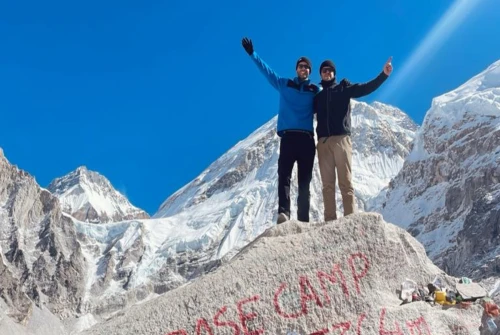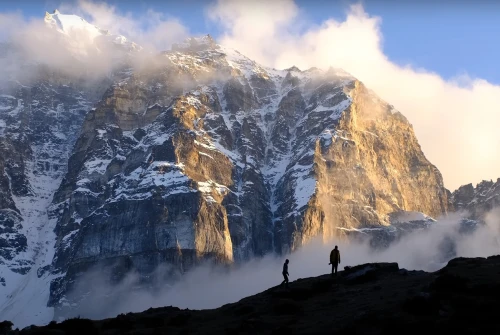Overview
Langtang Valley Trek is one of Nepal’s most scenic short treks, located just north of Kathmandu near the Tibetan border. Despite being so close to the capital, the Langtang region offers a truly remote Himalayan experience filled with jaw-dropping mountain views, vibrant Tamang villages, ancient monasteries, and diverse landscapes ranging from lush forests to glacial valleys. This trail is often described as a “hidden gem” because it remains less crowded than popular treks like Everest Base Camp or Annapurna Base Camp, yet it offers equal beauty and charm.
The trek usually takes around 7 to 10 days, depending on your pace and chosen itinerary. Starting from Syabrubesi, the route gradually ascends through rhododendron and bamboo forests, passing the beautiful villages of Lama Hotel and Langtang Village before reaching Kyanjin Gompa, the cultural and spiritual heart of the region. From here, trekkers can enjoy panoramic views of Langtang Lirung (7,227 m) and hike up to Tserko Ri (4,984 m) for a breathtaking sunrise.
What makes the Langtang Valley Trek truly special is the combination of natural beauty and cultural authenticity. The Tamang and Tibetan-influenced communities warmly welcome trekkers with their traditional hospitality, ancient Buddhist prayer flags, stone-built homes, and yak pastures. It’s not just a trek through nature, it’s a journey through a living Himalayan culture that feels untouched by modernity.
Before starting your trek, understanding the Langtang Valley weather on a month-by-month basis is crucial. The region’s weather changes drastically with the seasons, from colorful spring blossoms and monsoon rains to crisp autumn skies and snow-covered winter landscapes. Knowing what to expect each month helps you pack appropriately, plan better, and make the most out of your trekking experience.
Is the Langtang Valley Trek Safe?
The Langtang Valley Trek is considered one of the safer trekking routes in Nepal, especially since the region has been rebuilt and revitalized following the 2015 earthquake. Trails have been reconstructed, new lodges and tea houses have been established, and local communities have become more organized to ensure the safety and comfort of trekkers. However, as with any trek in the Himalayas, safety depends largely on preparation, awareness, and respecting nature’s unpredictability.
One of the biggest concerns for trekkers is altitude sickness. The highest point of the Langtang Valley Trek, Tserko Ri at 4,984 meters, can trigger mild symptoms of Acute Mountain Sickness (AMS) if you ascend too quickly. To prevent this, trekkers should follow the “climb high, sleep low” principle and take acclimatization days in Kyanjin Gompa. Staying hydrated, eating properly, and avoiding alcohol can significantly reduce risks. Hiring an experienced local guide also ensures you have immediate support in case of altitude-related issues.
When it comes to trail safety, the Langtang route is generally well-marked and maintained. During spring and autumn, the trails are dry and stable, making it easy to trek even for beginners. However, in the monsoon season (June–August), heavy rainfall can cause slippery paths and occasional landslides in some areas. Trekking poles, waterproof boots, and a reliable guide can make a huge difference during this time. Similarly, in winter (December–February), snow can cover higher sections of the trail, and temperatures drop significantly, so warm gear is essential.
Another factor contributing to the trek’s safety is the friendly and helpful local community. The Tamang and Tibetan villagers along the trail are known for their hospitality and deep knowledge of the terrain. They often assist trekkers who face minor issues or need guidance. Additionally, there are several health posts and emergency rescue services available through trekking agencies in case of severe altitude sickness or injuries.
In short, the Langtang Valley Trek is safe if you plan smartly, pack properly, and respect the mountain environment. Choosing the right season (spring or autumn), traveling with a certified guide, and trekking at a comfortable pace can ensure a smooth and unforgettable adventure in one of Nepal’s most beautiful valleys.
Langtang Valley Trek Weather Month by Month
Weather plays a huge role in shaping your experience on the Langtang Valley Trek. Each month offers something unique, from blooming rhododendron forests in spring to snow-covered trails in winter. Understanding the seasonal variations helps you choose the right time that matches your trekking preferences, comfort level, and photography goals.
In general, the Langtang region experiences four distinct trekking seasons: Spring (March–May), Monsoon (June–August), Autumn (September–November), and Winter (December–February). Let’s explore them one by one to see how temperature, visibility, and trail conditions change throughout the year.
Spring (March–May): The Blooming Season for Langtang Valley Trek
Spring is widely regarded as one of the best times to trek in Langtang Valley. During this period, the entire valley comes alive with color, fragrance, and energy. The forests are filled with blooming rhododendrons, magnolias, and wildflowers, painting the hillsides in pink, red, and white shades. The weather is mild and comfortable, with clear blue skies, moderate temperatures, and excellent mountain visibility.
The days are long and bright, allowing trekkers to walk comfortably without the scorching sun or freezing cold. Most days are sunny with occasional chilly mornings and evenings, making it ideal for both trekking and photography. You’ll also find the teahouses open and welcoming, offering warm meals and cozy rooms after a long day’s hike.
Spring is also the best season for wildlife sightings. You might spot Himalayan Thars, langurs, or colorful birds like the Danphe (Nepal’s national bird). The natural scenery combined with cultural vibrancy makes this season perfect for those who want a full Himalayan experience without extreme weather conditions.
Let’s break down the weather month-by-month for spring — March, April, and May.
Langtang Valley Trek in March
March marks the beginning of spring, a transition from the cold winter into a warmer and livelier season. Snow still blankets higher regions like Kyanjin Gompa and Tserko Ri in early March, creating postcard-like views. As the days progress, the snow begins to melt, opening up trails and revealing green meadows and flower buds.
The daytime temperature in March ranges between 10°C to 15°C, while nighttime temperatures can drop to around -3°C to 0°C. It’s cool but comfortable for trekking. Mornings are crisp, afternoons are pleasant, and evenings can be chilly — perfect for enjoying a hot cup of tea by the fireplace at a tea house.
Another great advantage of trekking in March is that crowds are still relatively low, giving you a more peaceful experience compared to April. The weather is also stable, and there’s very little risk of rainfall. If you prefer quiet trails, bright skies, and a balance between snow and greenery, March is an ideal time to trek the Langtang Valley.
Langtang Valley Trek in April
April is considered the peak trekking month in the Langtang region. The weather is nearly perfect — warm during the day, cool at night, and consistently clear. This is the time when rhododendrons are in full bloom, turning the forests into a magical blend of colors. The trail from Lama Hotel to Langtang Village looks especially enchanting during this month.
The average daytime temperature ranges from 12°C to 18°C, while nights remain around 2°C to 5°C. The visibility is excellent, giving you uninterrupted views of Langtang Lirung, Ganesh Himal, and Dorje Lakpa. April also offers calm winds and minimal rainfall, making it a dream for photographers and nature lovers.
Since it’s a popular trekking month, expect more trekkers on the trail and slightly busier teahouses. It’s best to book accommodations in advance if you’re traveling in a group. April provides a perfect mix of comfort, scenery, and vibrancy — truly one of the best times to experience Langtang at its fullest.
Langtang Valley Trek in May
May is the last month of spring, gradually transitioning toward the pre-monsoon period. The days are warmer, and some haze begins to appear in the lower valleys due to rising humidity. However, the mornings and evenings remain fresh and comfortable.
Daytime temperatures reach around 18°C to 20°C, while nighttime temperatures stay between 5°C to 7°C. The skies are generally clear early in the day but can become slightly cloudy in the afternoon. Trekking during this time means fewer crowds compared to April, and the trails are still lush with flowers and greenery.
May is also an excellent month for side hikes such as to Tserko Ri or Langshisha Kharka, as the snow at higher altitudes has mostly melted, making routes accessible. Just remember to carry sunscreen and stay hydrated, as the sun can feel stronger at higher elevations.
In short, March to May is the most colorful, comfortable, and photogenic season to trek Langtang Valley — the best balance between weather, scenery, and overall experience.
Monsoon (June–August): The Wet and Challenging Season
The monsoon season in Nepal, lasting from June to August, brings a completely different mood to the Langtang Valley Trek. This time of year is characterized by frequent rainfall, cloudy skies, and humid weather. The hillsides turn lush green, rivers swell, and waterfalls cascade down every cliff, creating a magical, jungle-like atmosphere. However, with beauty comes challenge — slippery trails, leeches, and occasional landslides make trekking more difficult.
Despite the rain, trekking in monsoon has its own quiet charm. The trails are almost empty, giving you a sense of solitude and connection with nature. The local villages feel calm and peaceful, and teahouse owners welcome the few trekkers who dare to explore during this season. If you love greenery, solitude, and don’t mind getting a bit wet, the monsoon trek can be an unforgettable experience.
Let’s explore what each month — June, July, and August — looks like in the Langtang region.
Langtang Valley Trek in June
One of the upsides of trekking in June is the vivid greenery that blankets the valley. Rice fields glow in bright green, forests are alive with fresh leaves, and waterfalls are at their most powerful. Though distant mountain views may be obstructed by clouds, the natural atmosphere feels refreshing and alive.
If you trek in early June, you can still enjoy a mix of post-spring clarity and monsoon freshness, but by late June, expect heavier rainfall.
Langtang Valley Trek in July
July is the peak of the monsoon, bringing the heaviest and most consistent rainfall in the Langtang region. Rainfall often occurs daily, and mist covers the valleys, creating a mystical and moody ambiance. While it’s not the most popular time for trekking, it offers complete solitude — you might not meet another group for days.
Daytime temperatures average around 20°C to 25°C, and nights remain comfortable between 12°C to 14°C. The humidity level is high, so it’s important to wear light, quick-drying clothes rather than thick fabrics. Leech presence is common at lower altitudes, particularly in forested sections like the path between Syabrubesi and Lama Hotel. Carrying salt or leech repellent can help.
While the views of the mountains are often hidden, the beauty of lush forests, gushing streams, and quiet villages creates a deeply tranquil experience. The sound of rainfall mixed with the murmur of rivers adds a meditative rhythm to the trek. It’s a good time for photographers who enjoy moody, misty landscapes rather than clear panoramas.
Because the trail conditions are slippery, it’s recommended that only experienced trekkers or those with guides attempt Langtang Valley in July. Proper footwear, rain gear, and extra caution on steep sections are essential.
Langtang Valley Trek in August
August signals the end of the monsoon season. Rainfall gradually decreases toward the second half of the month, and sunny intervals become more frequent. The landscape remains lush and vibrant, the air feels fresh, and the streams and waterfalls are still powerful from the weeks of rain.
The daytime temperatures range between 18°C to 23°C, and nights stay around 10°C to 12°C. While lower regions can still experience some rain showers, higher areas like Langtang Village and Kyanjin Gompa begin to enjoy clearer skies, particularly in the mornings.
August is an excellent month for trekkers who want a mix of solitude and improving weather. The post-monsoon atmosphere leaves the valley cleaner, the air crisper, and the mountains start to appear again between the clouds. As tourism picks up towards the end of the month, you’ll find teahouses reopening fully and trails becoming more accessible.
However, trekkers should still be cautious of landslides or slippery slopes in certain sections. Walking early in the morning before afternoon rain showers is recommended. With proper preparation, August offers a peaceful and lush trekking experience that bridges the monsoon’s calm with the excitement of the upcoming autumn season.
Overall, trekking during the monsoon (June–August) demands flexibility and a spirit of adventure. The scenery is breathtakingly green and alive, but the conditions can be unpredictable. It’s best for those who have prior trekking experience or who are guided by a local expert familiar with the trails.
Autumn (September–November): The Prime Trekking Season
Autumn is undoubtedly the best season for the Langtang Valley Trek, offering crystal-clear skies, breathtaking mountain views, and ideal trekking temperatures. The heavy monsoon rains subside by early September, leaving behind lush greenery, dust-free trails, and vibrant landscapes. The entire Langtang region glows with clarity and freshness, making this period a dream come true for trekkers and photographers alike.
During this season, daytime temperatures range between 10°C to 18°C, while nighttime temperatures drop to 0°C to 5°C, depending on the altitude. The visibility is excellent throughout the day, and the weather remains stable, which significantly reduces the risk of flight delays or cancellations.
Autumn is also the busiest trekking season in Nepal, so expect well-maintained trails, bustling teahouses, and lively interactions with other trekkers. The locals are cheerful after the monsoon harvest, adding to the welcoming atmosphere. Overall, this is the perfect time for those seeking a classic Himalayan trekking experience — clear skies, cultural charm, and unforgettable views.
Langtang Valley Trek in September
September marks the beginning of autumn and the end of the monsoon. The trails start to dry out, the skies clear, and the forests come alive with the freshness of post-rain vegetation. The waterfalls still flow beautifully, and the air feels crisp and refreshing. Early September can still experience light showers, but by mid-month, trekking conditions improve significantly.
Daytime temperatures are mild, ranging from 12°C to 18°C, while nighttime temperatures hover between 3°C and 8°C. This period is less crowded compared to October, making it a fantastic month for those seeking fewer crowds but excellent weather. The views of Langtang Lirung and Dorje Lakpa are consistently clear, providing amazing photography opportunities.
Trekkers can also enjoy the local harvest season and occasional village celebrations, adding a cultural richness to the journey.
Langtang Valley Trek in October
October is the most popular month for the Langtang Valley Trek, and for good reason. The weather is at its best, offering perfect visibility, comfortable temperatures, and clear blue skies throughout the day. The post-monsoon air is clean and crisp, and the mountain panoramas are simply spectacular.
Daytime temperatures range from 10°C to 16°C, while nights are colder, between -2°C and 4°C. You can enjoy long trekking days without worrying about rain or heat. The trails are full of life, with trekkers from all over the world, and teahouses are in full swing, serving warm meals and cozy accommodations.
October also coincides with Nepal’s biggest festivals, Dashain and Tihar, adding a vibrant cultural element to your trek. The festive decorations, local music, and traditional celebrations along the trail make the journey even more special.
In short, October is the golden month for trekking in Langtang Valley, offering a perfect mix of scenic beauty, great weather, and cultural experiences.
Langtang Valley Trek in November
November is another excellent month for the Langtang Valley Trek. The weather remains clear, with minimal rainfall and fantastic mountain views. The trails are slightly less crowded than October, making it a perfect time for trekkers who want great conditions but more peaceful trails.
Daytime temperatures average between 8°C to 14°C, while nighttime temperatures can drop to -3°C to 2°C. The chill in the air grows as winter approaches, but the days remain comfortable for walking. The skies are deep blue, and visibility is extraordinary, especially in the mornings.
By late November, snow may start accumulating at higher elevations such as Kyanjin Ri and Tserko Ri, but the trails remain safe and passable. This period is ideal for photographers and adventurers who love the crisp air and golden autumn light.
Overall, November is a tranquil yet stunning time to experience the Langtang Valley, combining the beauty of fall with the peacefulness of early winter.
Winter (December–February): The Cold and Serene Season
Winter transforms the Langtang Valley into a peaceful, snow-covered wonderland. While temperatures drop significantly, the serene atmosphere, fewer trekkers, and pristine snowy landscapes make it a magical experience for those who can handle the cold. The skies remain clear, offering some of the best mountain views of the year, as there is very little moisture or haze in the air.
However, the cold temperatures can be challenging, particularly at night. Daytime temperatures range between 5°C to 10°C, while nighttime temperatures can plummet to -8°C or even -12°C at higher altitudes like Kyanjin Gompa. The trails are less crowded, and teahouses remain open, though some higher-altitude lodges may close temporarily due to snow.
Winter trekking in Langtang is best suited for experienced trekkers or those who prefer solitude and adventure. Proper winter gear — such as thermal layers, down jackets, and insulated boots — is essential to stay warm and comfortable.
Despite the chill, winter treks offer something extraordinary: quiet trails, starry nights, and snow-blanketed peaks that create a truly unforgettable experience.
Langtang Valley Trek in December
In December, the Langtang Valley begins to embrace winter fully. The trails remain accessible, though snow starts to accumulate at higher altitudes. The mornings are crisp, and the days are bright, with daytime temperatures around 5°C to 10°C and nighttime temperatures between -5°C and -10°C.
December is perfect for those who want to avoid crowds and experience the tranquil beauty of the Langtang region. The skies are usually cloudless, offering excellent mountain visibility, and the cold adds a refreshing sharpness to the air. However, trekkers should be well-prepared with warm clothing and sleeping bags rated for subzero temperatures.
With fewer trekkers, you’ll enjoy quiet trails, personal interactions with locals, and peaceful teahouse stays — making December a rewarding month for those who seek solitude and serenity.
Langtang Valley Trek in January
January is the coldest month in the Langtang region, blanketed with snow at higher altitudes and offering a peaceful, off-season trekking experience. The trails are almost empty, allowing trekkers to enjoy the solitude of the Himalayas in their purest form. While the chill can be intense, the crystal-clear skies and snow-capped peaks make it one of the most photogenic times of the year.
Daytime temperatures average between 2°C to 8°C, while nighttime temperatures can drop as low as -10°C to -15°C in higher regions like Kyanjin Gompa. The lower trails near Syabrubesi and Lama Hotel remain open and manageable, but routes above 3,800 meters may require crampons or trekking poles for extra stability on icy paths.
Though it’s cold, January offers unbeatable mountain visibility — the Langtang Lirung, Yala Peak, and Dorje Lakpa shimmer under a pure white blanket of snow. For those well-prepared with thermal gear, insulated boots, and a sense of adventure, trekking in January can be a rewarding and meditative experience.
Langtang Valley Trek in February
February marks the transition from winter to spring in the Langtang Valley. While the temperatures remain cold, especially during early mornings and nights, the days gradually become warmer and longer. Snow still covers the higher trails, but it begins to melt toward the end of the month, revealing beautiful alpine meadows and clear paths once again.
Daytime temperatures usually range between 5°C to 12°C, while nighttime temperatures stay around -6°C to -10°C. The skies are brilliantly clear, ensuring excellent visibility of the snow-draped Himalayas. Trekkers in February can enjoy a peaceful atmosphere, with few tourists and open teahouses that offer cozy, fireside evenings.
By mid to late February, rhododendron buds begin to appear, signaling the coming of spring. This month is ideal for trekkers who prefer less-crowded trails, crisp weather, and early glimpses of springtime colors. It’s also a great time to capture serene, snowy vistas before the busy season begins.
Summary: Choosing the Right Time to Trek
Choosing the best time to trek the Langtang Valley depends on what you seek from the journey.
- Spring (March–May) is perfect for nature lovers, offering colorful flowers, moderate temperatures, and lively trails.
- Autumn (September–November) provides the most stable weather, clear skies, and magnificent mountain views — ideal for photographers and first-time trekkers.
- Winter (December–February) is cold but serene, suited for those who prefer solitude and snow-covered landscapes.
- The monsoon season (June–August) is the least popular due to heavy rainfall and leeches, but it brings lush greenery and a unique tranquility for adventurous trekkers.
In short, the best months for the Langtang Valley Trek are March to May and September to November, when the weather is stable, the skies are clear, and the mountain views are at their best.
Langtang Valley Trek Temperature Overview
Understanding the temperature variations helps trekkers prepare effectively for their Langtang adventure.
- Spring (March–May): Daytime 10°C–20°C, Nighttime 0°C–5°C
- Summer/Monsoon (June–August): Daytime 15°C–25°C, Nighttime 8°C–12°C
- Autumn (September–November): Daytime 10°C–18°C, Nighttime 0°C–5°C
- Winter (December–February): Daytime 5°C–10°C, Nighttime -5°C to -12°C
While temperatures vary depending on altitude, the climate remains generally mild during the day and cold at night. Dressing in layers is essential to adapt to these rapid temperature changes.
Langtang Valley Trek Monthly Rainfall Guide
Rainfall in the Langtang region follows Nepal’s typical monsoon pattern:
- June–August: The wettest months, with frequent heavy rainfall, slippery trails, and landslide risks.
- September–November & March–May: Mostly dry with rare light showers, offering the best trekking conditions.
- December–February: Very low rainfall but possible snowfall in higher regions.
Annual precipitation averages 700–1,000 mm, mostly concentrated in the summer. Proper rain gear and waterproof covers are recommended if trekking between June and early September.
Langtang Valley Trek vs Mardi Himal Trek: Which is Better for You?
Both the Langtang Valley Trek and Mardi Himal Trek offer incredible Himalayan experiences, but they differ in scenery, culture, and difficulty. The Langtang Valley Trek, located north of Kathmandu, showcases diverse landscapes — from lush forests to snow-capped peaks like Langtang Lirung. It’s known for its Tamang and Tibetan-influenced culture, charming villages, and yak pastures, offering a rich cultural experience alongside breathtaking mountain views.
On the other hand, the Mardi Himal Trek, located in the Annapurna region near Pokhara, is shorter and less crowded. It leads trekkers through rhododendron forests, ridge walks, and stunning viewpoints of Machhapuchhre (Fishtail) and Annapurna ranges. It’s perfect for beginners or those seeking a peaceful, off-the-beaten-path adventure with dramatic close-up mountain scenery.
In comparison, Langtang feels more remote and cultural, while Mardi Himal offers better panoramic views in a shorter duration. Langtang is ideal for trekkers wanting cultural immersion and quiet mountain valleys, whereas Mardi Himal suits those looking for a scenic yet moderate trek easily accessible from Pokhara.
Comprehensive Packing Guide for Langtang Valley Trek
Packing smart is the key to a comfortable and successful Langtang Valley Trek. The trek takes you through a range of altitudes and climates — from warm forests to chilly mountain passes — so being prepared with the right gear makes a huge difference. Here’s a complete guide to what you should pack for the Langtang adventure.
Essential Clothing
When packing for the Langtang Valley Trek, layering is the golden rule. The temperature can change drastically from morning to night, so wearing layers allows you to adjust easily.
Base Layers:
These are moisture-wicking clothes that keep you dry and warm. Pack two pairs of thermal tops and bottoms made of merino wool or synthetic fabric. Avoid cotton, as it retains sweat and can make you cold.
Mid Layers:
These layers provide insulation. A warm fleece jacket or down sweater is essential for chilly evenings and higher altitudes.
Outer Layers:
Carry a windproof and waterproof jacket to protect against sudden rain or wind, especially during monsoon or early winter treks.
Trekking Pants and Shirts:
Lightweight, quick-dry trekking pants and long-sleeved shirts work best. You can also pack one pair of warm trousers for nights at higher altitudes.
Accessories:
- Warm gloves and a woolen hat
- Sun hat or cap
- Buff or scarf for dust and wind
- Warm socks (4–5 pairs)
- Innerwear suitable for multi-day use
Pro Tip: Always carry an extra set of dry clothes in a waterproof bag; it can be a lifesaver after a day of unexpected rain or snow.
Footwear & Gear
Your footwear is one of the most critical parts of your trekking equipment, comfort and grip matter more than anything.
Trekking Boots:
Choose water-resistant, ankle-supportive trekking boots that you’ve already broken in. Avoid wearing new boots directly on the trek. The terrain in Langtang can be rocky, steep, and slippery, so a good pair of boots will protect your feet and joints.
Camp Shoes:
Lightweight slippers or sandals are useful for relaxing in teahouses after long trekking days.
Trekking Poles:
Highly recommended, especially for steep ascents and descents. They reduce knee strain and improve balance on uneven trails.
Backpack:
A 40–50L backpack is ideal for carrying essentials, while a duffel bag can be used if you hire a porter. Don’t forget a rain cover for your backpack.
Sleeping Bag:
Though most teahouses provide blankets, a -10°C rated sleeping bag ensures warmth during cold nights, especially in winter.
Other Essentials:
- Sunglasses (UV protection)
- Headlamp with extra batteries
- Water bottles or hydration bladder (at least 2L capacity)
- Water purification tablets or filter
- Sunscreen, lip balm, and moisturizer
- First aid kit (include Diamox, bandages, and pain relief ointment)
- Power bank or solar charger
- Quick-dry towel and toiletries
Bonus Tip: Keep your valuables (passport, cash, permits) in a small waterproof pouch and always carry them with you, not in your porter’s bag.
FAQs About Langtang Valley Trek Monthly Weather
1. What is the best month to trek the Langtang Valley Trek?
The best months are March to May (spring) and September to November (autumn). These seasons offer stable weather, clear mountain views, and comfortable temperatures — ideal for trekking and photography.
2. Can I trek the Langtang Valley Trek as a beginner?
Yes! The Langtang Valley Trek is perfect for beginners with basic fitness. The trails are well-marked, teahouses are comfortable, and there’s no technical climbing required. However, gradual acclimatization is important to prevent altitude sickness.
3. Is the monsoon season safe for trekking?
Trekking in the monsoon (June–August) can be challenging due to heavy rainfall, slippery trails, and leeches. While it’s not ideal, experienced trekkers can still enjoy the lush landscapes and solitude with proper rain gear and guidance from a local guide.
4. Which season has the clearest mountain views?
The autumn season (October–November) offers the clearest skies and most stunning mountain views. The post-monsoon air is crisp and dust-free, revealing sharp panoramas of Langtang Lirung, Dorje Lakpa, and Ganesh Himal.
5. What should I pack for the Langtang Valley Trek?
Pack layered clothing, sturdy boots, a warm sleeping bag, rain protection, and essentials like sunscreen, water purification tablets, and trekking poles. Having the right gear ensures comfort in varying weather conditions throughout the trek.
6. Are there risks of altitude sickness?
Yes, altitude sickness is possible since the trek reaches heights above 3,800 meters. To minimize the risk, ascend gradually, stay hydrated, and avoid alcohol. If symptoms worsen, descend immediately and seek medical attention.
7. Can beginners do the Langtang Valley Trek in winter?
Yes, but it requires preparation. Winter treks (December–February) are cold and snowy but offer serene beauty. With proper warm gear, experienced guides, and physical readiness, beginners can safely complete the trek.
Conclusion
The Langtang Valley Trek is one of Nepal’s most rewarding journeys, a perfect blend of natural beauty, cultural heritage, and mountain adventure. Each season paints the valley in a unique way, from the vibrant blossoms of spring to the golden hues of autumn and the tranquil snowscapes of winter.
Whether you’re a first-time trekker or an experienced hiker, understanding the monthly weather patterns helps you plan the perfect adventure. With the right preparation, gear, and mindset, Langtang offers not just a trek, but an unforgettable Himalayan experience. At All Nepal Hiking, we are here to make your Langtang Valley adventure smooth, safe, and truly memorable. Our experienced guides, well-planned itineraries, and personalized support ensure you experience the best of Nepal’s mountains, one breathtaking step at a time.
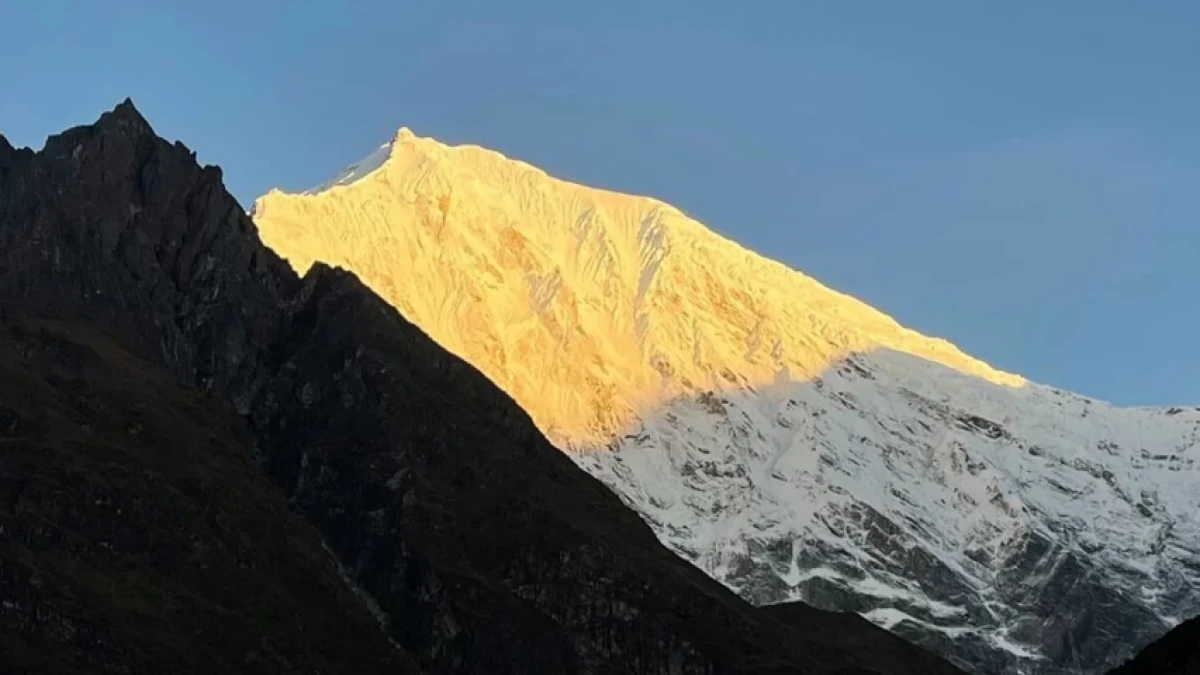
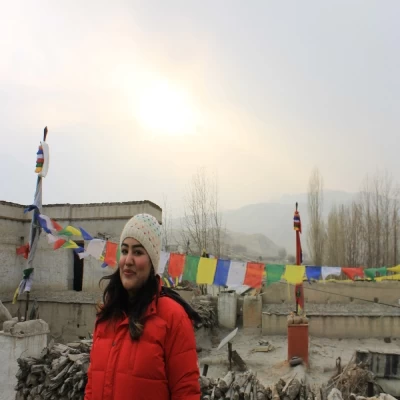
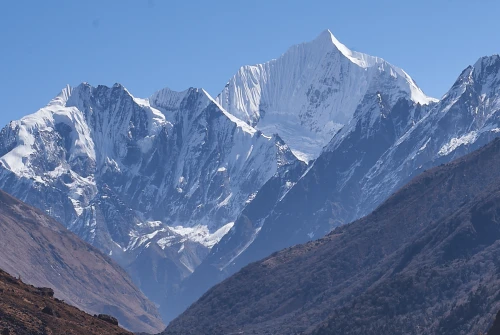
 based on 3 reviews
based on 3 reviews
.webp)
